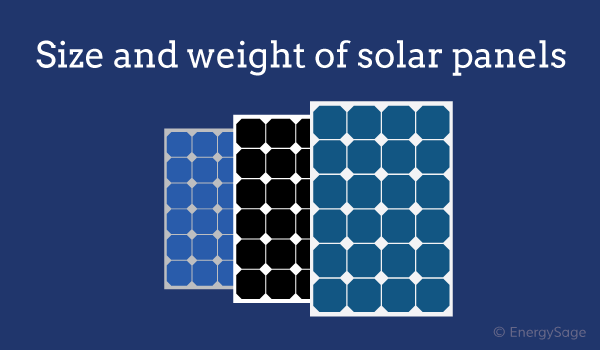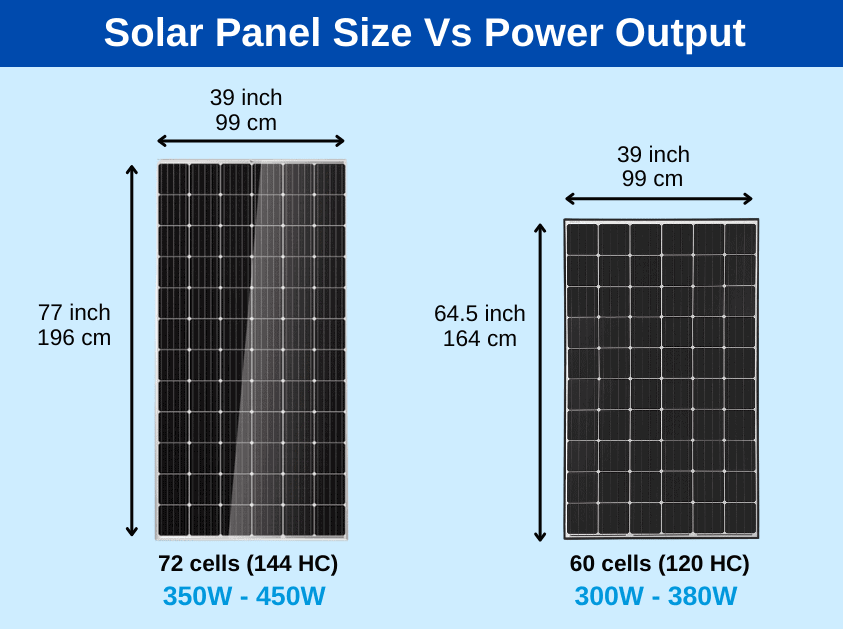How Many Solar Panels Will I Require for My Home?

It's pointless to install just one solar panel if you want to gain the financial benefits of a solar panel system. While the answer isn't always so straightforward, we've compiled some case studies to help you understand, at a high level, how many solar panels you'll need to create an effective solar array.
How Many Solar Panels Will I Require to Power My Home?
To cover 100 percent of a normal home's electricity consumption, we estimate that 20 to 24 solar panels are required. The actual quantity you'll need to install is determined by factors like your geographic location, panel efficiency, panel rated power, and personal energy usage habits. Importantly, the amount of solar panels you require for your home has a direct impact on the cost of solar.
How to Determine the Number of Solar Panels Required
The formula we developed to calculate the number of solar panels required to power your home is based on three essential factors: annual energy consumption, panel wattage, and production ratios. What precisely does that mean? Here are our assumptions and how we did our math:
Annual Electricity Consumption
The quantity of energy and electricity you consume in your home over the course of a year is referred to as your annual power usage. This amount, measured in kilowatt-hours (kWh), is impacted by the appliances in your home that utilize power and how frequently you use them. Electricity is used by refrigerators, air conditioning units, small kitchen appliances, lights, chargers, and other devices. If you want a more precise figure based on your specific energy usage, look through last year's utility bills to see how much electricity you consumed. Once you have that number, enter it into the formulas below.
Wattage of a Solar Panel
Panel wattage, often known as a solar panel's power rating, is the electrical production of a certain solar panel under ideal conditions. Wattage is measured in watts (W), and most solar panels provide between 250 and 400 W of power.
Productivity Ratios
The production ratio of a solar panel system is the ratio of the estimated energy output of a system over time (in kWh) to the actual system size (in W). These ratios are virtually never 1:1 — your production ratio will vary depending on how much sunshine your system receives (which is mostly determined by your geographic location). A 10 kW system that produces 14 kWh of power per year, for example, has a production ratio of 1.4 (14/10 = 1.4) — this is a completely realistic production ratio to see in the real world.
Finally, let's run the numbers.
We've established our three primary assumptions (energy use, solar panel wattage, and production ratios) But how do those figures convert to an anticipated quantity of solar panels for your home? The formula is as follows:
The number of panels is the system size multiplied by the production ratio multiplied by the panel wattage.
When we plug in our numbers from above, we get:
Panel count = 10,715 kW / 1.3 or 1.6 / 340 W
...giving us between 20 and 24 panels in a solar array, depending on the production ratio we use (20 for a 1.6 ratio, and 24 for a 1.3 ratio). So, 20 panels at 340 W each equals a total system size of approximately 6.8 kW!

How Much Energy Can Your Solar Panels Generate? The Intricacies of Production Ratios
The quantity of power (kWh) your solar energy system can generate is determined by the amount of sunshine exposure your roof receives, which determines your production ratio. The amount of sunlight you receive in a year is determined by where you live in the country as well as the time of year. Queensland, for example, has more sunny days per year than Victoria. However, in any location, you'll be able to generate enough electricity to meet your energy needs and eliminate your utility bills–if you live in a place with fewer peak sunlight hours, you'll simply need to have a larger solar array system installed at your home.
As a result, production ratios vary depending on geographic location, and a lower production ratio (due to less sunshine) implies you'll need more solar panels to produce the amount of energy you require.
How many solar panels are required for various system sizes?
In our lengthy example at the start of this blog, we estimated that a 6.8 kW system would most likely cover the average energy use for an Australian household if you reside in a region with a production ratio of 1.6, which may be a reasonable number for homes in most parts of Australia.
Estimating your household's annual energy demand is one of the most difficult components of sizing a solar panel installation. A number of larger consumer products or add-ons might drastically alter your annual kWh usage and thus the amount of panels you will require. For example, if you have central air conditioning or a heated swimming pool in your backyard, the size of your solar panel array may be substantially reduced. You should examine the energy effect of various things you own or are considering for your home to obtain a sense of the size you'll require.
If your house is small or has an irregularly shaped roof, the size of a solar panel is an important factor to consider. While homeowners with a wide roof may be willing to sacrifice some efficiency and purchase larger panels to obtain the optimal energy output, those with a smaller roof must be able to use fewer small high-efficiency panels to achieve the optimal output.
Today, the average household solar panel measurements are 170cm by 100cm.
How Does the Size of My House Affect the Number of Solar Panels I Require?
While the dimensions of solar panels have remained relatively constant over the last few years, the power production per unit area has improved considerably.
Indeed, many manufacturers, including SunPower, have reduced the size of the gaps between panels and use invisible frame and mounting hardware to keep the panels tight, efficient, and visually beautiful. The table below provides a rough estimate of how many solar panels your home would require based on its square footage.
How Many Solar Panels Can I Fit on My Roof Based on My Home’s Square Footage?
|
HOME SIZE |
ESTIMATED ANNUAL ELECTRICITY NEEDED |
NUMBER OF SOLAR PANELS NEEDED |
|
93 sq Mtr |
4,710 kWh |
14 |
|
186 sq Mtr |
9,420 kWh |
29 |
|
232 sq Mtr |
11,775 kWh |
35 |
|
279 sq Mtr |
14,130 kWh |
42 |
How Many Solar Panels Will I Require to Power Common Appliances?
One thing is evident after reading the various kWh requirements for ordinary household appliances and products: certain add-ons will dramatically modify monthly energy use and can have a significant impact on the size of the solar panel system you should install. Combining an electric vehicle with solar panels, for example, is an excellent method to cut carbon emissions and improve energy efficiency; nevertheless, it should be planned carefully because it has the potential to double the size of your PV system.
Though it is possible to install a solar system and then have a solar installer add more panels later to accommodate increased energy needs, the most practical option is to size your system as precisely as possible based on your anticipated purchases–such as an electric vehicle, swimming pool, or central air system. A good habit for each new solar homeowner is to ask themselves, "How many solar panels will I need for my refrigerator, my hot tub, and so on?"
How many solar panels do I need for individual electricity loads?
|
PRODUCT |
AVERAGE ANNUAL ELECTRICITY NEEDED |
NUMBER OF SOLAR PANELS NEEDED |
|
Refrigerator |
600 kWh |
2 |
|
Window air conditioning |
215 kWh |
1 |
|
Central air conditioning |
1,000 kWh |
3 |
|
Electric vehicle |
3,000 kWh |
9 |
|
Heated swimming pool |
2,500 kWh |
8 |
|
Hot tub (outdoor) |
3,300 kWh |
10 |
Begin Your Solar Journey With Xpress Industries Today
Brendale's solar supplier and installer, Xpress Industries, competes for your business with unique solar bids tailored to your needs. Schedule a consultation today to learn how much money you can save by going solar.